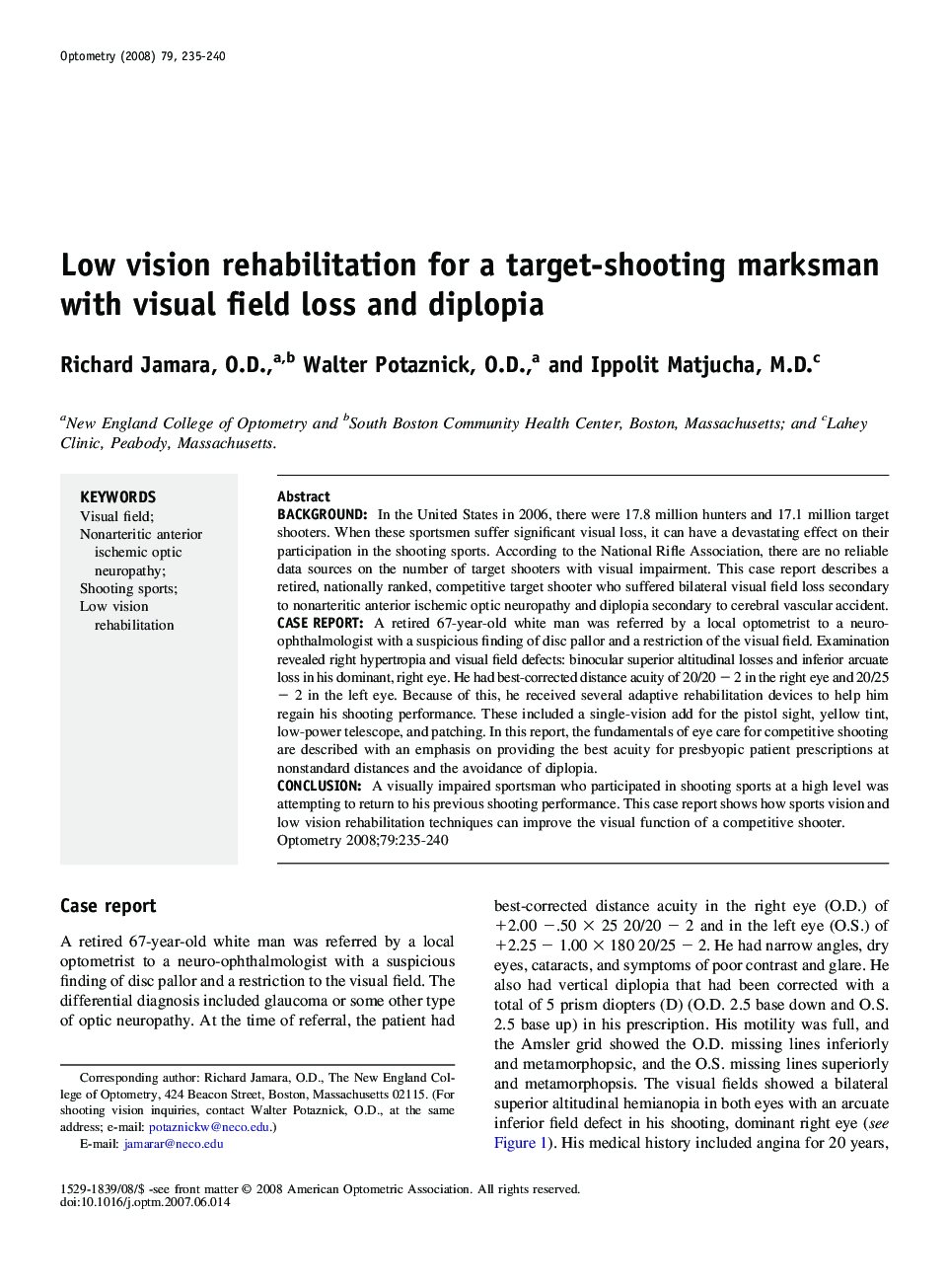| Article ID | Journal | Published Year | Pages | File Type |
|---|---|---|---|---|
| 2699602 | Optometry - Journal of the American Optometric Association | 2008 | 6 Pages |
BackgroundIn the United States in 2006, there were 17.8 million hunters and 17.1 million target shooters. When these sportsmen suffer significant visual loss, it can have a devastating effect on their participation in the shooting sports. According to the National Rifle Association, there are no reliable data sources on the number of target shooters with visual impairment. This case report describes a retired, nationally ranked, competitive target shooter who suffered bilateral visual field loss secondary to nonarteritic anterior ischemic optic neuropathy and diplopia secondary to cerebral vascular accident.Case reportA retired 67-year-old white man was referred by a local optometrist to a neuro-ophthalmologist with a suspicious finding of disc pallor and a restriction of the visual field. Examination revealed right hypertropia and visual field defects: binocular superior altitudinal losses and inferior arcuate loss in his dominant, right eye. He had best-corrected distance acuity of 20/20 − 2 in the right eye and 20/25 − 2 in the left eye. Because of this, he received several adaptive rehabilitation devices to help him regain his shooting performance. These included a single-vision add for the pistol sight, yellow tint, low-power telescope, and patching. In this report, the fundamentals of eye care for competitive shooting are described with an emphasis on providing the best acuity for presbyopic patient prescriptions at nonstandard distances and the avoidance of diplopia.ConclusionA visually impaired sportsman who participated in shooting sports at a high level was attempting to return to his previous shooting performance. This case report shows how sports vision and low vision rehabilitation techniques can improve the visual function of a competitive shooter.
